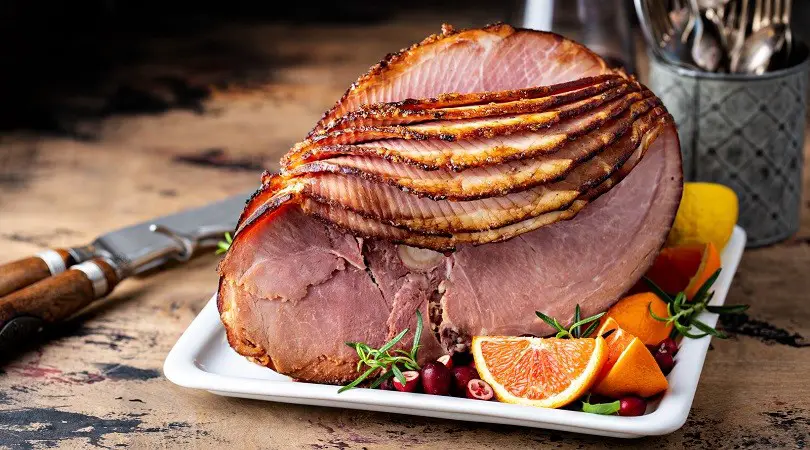Last Updated on October 14, 2023
Traits are passed from parents to offspring through genes. Genes are units of information that are passed down from parent to child. They are responsible for an individual’s characteristics, such as hair and eye color.
Traits are also influenced by the environment.
When it comes to genetics, we often think of DNA as the code that determines everything about us. But DNA is only part of the story. The environment we’re raised in plays a role too, and so does something called epigenetics.
Epigenetics is the study of how our genes are turned on and off, and it’s a field that’s still relatively new. Scientists are just beginning to understand how epigenetics works, but they do know that it can affect everything from our physical appearance to our risk for certain diseases.
So how does this all work?
Well, let’s start with DNA.DNA is made up of two strands that twist around each other to form a double helix. These strands are made up of smaller units called nucleotides, which are themselves made up of even smaller units called nitrogen bases. There are four different nitrogen bases: adenine (A), thymine (T), cytosine (C), and guanine (G).
Each strand of DNA has a sequence of these nitrogen bases, and it’s this sequence that encodes our genetic information. For example, the sequence ATGC might encode for blue eyes, while the sequence TTCC might encode for brown eyes.
Now, when a sperm cell fertilizes an egg cell, the two cells fuse together and their DNA mixes together.
So if the sperm cell has the ATGC sequence and the egg cell has the TTCC sequence, then their offspring will have a combination of both sequences: ATTCC. This process is called meiosis, and it’s how traits are passed down from parents to offspring.
But like we said before, DNA isn’t the whole story.
The environment we’re raised in can also affect our traits. For example, if a pregnant woman smokes cigarettes or drinks alcohol , her unborn child may be born with certain birth defects . This is because nicotine and alcohol can cross the placenta and damage developing cells .
Additionally , things like stress , diet ,and exposure to toxins can also cause changes in gene expression . So while our DNA may provide a blueprint for who we are , it’s not always destiny . Our lifestyles choices and experiences can also play a role in shaping us into who we become .
How Are Traits Passed From Parents To Offspring?
How are Genes Passed from Parents to Offspring?
When it comes to genetics, we often talk about “nature vs. nurture.” But the reality is that both nature and nurture play a role in shaping who we are. Our genes are passed down from our parents and determine things like our eye color and height.
But our environment also plays a role in how our genes are expressed. For example, someone with the gene for obesity may never become obese if they live an active lifestyle and eat a healthy diet.
So, how are genes actually passed from parent to child?
It all starts with something called DNA (deoxyribonucleic acid). DNA is made up of two long strands that wind around each other like a twisted ladder. These strands are made up of smaller units called nucleotides.
There are four different types of nucleotides in DNA: adenine (A), thymine (T), cytosine (C), and guanine (G). The order of these nucleotides determines the information stored in each gene.
Each strand of DNA is attached to another at the rungs of the ladder, forming what’s known as a base pair.
Adenine always pairs with thymine, while cytosine always pairs with guanine. It’s this base pairing that ensures each strand of DNA is complementary to the other.
During cell division, the double helix unwinds and each strand serves as template for making a new partner strand.
As the cells divide, so does their DNA. This process continues throughout our lives, ensuring that every cell in our body has an exact copy of our genome – all 3 billion base pairs!
How are Traits Passed from Parents to Offspring Quizlet?
In order for traits to be passed from parents to offspring, the parents must have those traits themselves. The process by which this occurs is through something called DNA replication. This is when the DNA in the parent’s cells is copied so that it can be passed down to their offspring.
The specific way that traits are passed down can be a bit complicated, but essentially it works like this: each parent has two copies of each gene (one from each parent). These genes can be either dominant or recessive. Dominant genes will always express themselves, while recessive genes will only express themselves if there are no dominant genes present.
If both parents have a dominant gene for a certain trait, then their child will definitely inherit that trait. If both parents have a recessive gene for a certain trait, then their child has a 25% chance of inheriting that trait. Finally, if one parent has a dominant gene and the other has a recessive gene, then their child has a 50% chance of inheriting the trait.

Credit: slideplayer.com
Traits are Passed from Parents to Offspring These Traits are Determined by
When it comes to determining which traits are passed down from parents to their offspring, there are a few key things to keep in mind. First and foremost, it’s important to understand that these traits are determined by the genes that each parent possesses. In other words, the specific combination of genes that a parent has will play a major role in determining which traits are passed down to their child.
One way to think about this is with eye color. If both parents have brown eyes, then it’s likely that their child will also have brown eyes. However, if one parent has blue eyes and the other has brown eyes, then there’s a chance that their child could inherit either blue or brown eyes (or even a mix of the two).
So while genes definitely play a role in trait inheritance, it’s not always an exact science. Another thing to keep in mind is that some traits may be more dominant than others. For example, let’s say that one parent has green eyes and the other has brown eyes.
In this case, there’s a good chance that their child will have green eyes because green is the dominant color. However, if both parents have blue eyes, then there’s less of a chance that their child will inherit green eyes since blue is the recessive color in this scenario. Of course, there are many other factors involved in trait inheritance beyond just genes and dominance levels.
But understanding these basics can give you a good starting point for understanding how traits are passed down from generation to generation.
Conclusion
Inherited traits are passed from parents to offspring through their genes. Genes are units of heredity and are passed down from generation to generation. Traits are determined by the specific alleles (forms) of genes that are present.
Parents pass on half of their alleles to their children through gametes, sperm and eggs. The other half comes from the other parent. If a child inherits two different alleles for a trait, then the allele that is expressed is called the dominant allele and the allele that is not expressed is called the recessive allele.









